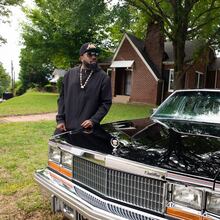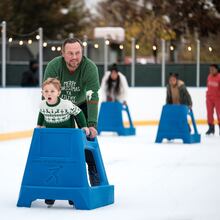Vonda Wright, 49, is an orthopedic surgeon with wide experience studying fitness among older adults. She is medical director of the UPMC Lemieux Sports Complex in Cranberry and founding director of the Performance and Research Initiative for Masters Athletes within the UPMC Center for Sports Medicine. Dr. Wright has written four fitness-related books, including “Fitness After 40: How to Stay Strong at Any Age.”
With the change in seasons motivating some seniors to come out of winter hibernation to be more active, it seemed a good time to get Dr. Wright’s advice for those interested in increasing their volume of outdoor activity and exercise:
Q: Let’s say someone’s 50 or older and has been relatively sedentary. If the nicer weather makes them more enthused about getting outdoors and exercising, what’s the right way to go about that?
A: People are under the impression it takes some special skills you can only read about in books to get active, but since we were 1 year old we’ve known how to push back from the table and go out and take a walk. The easiest thing is to just spend four or five days pushing back from the table, putting on shoes and getting out to take that walk.
Q: What’s the minimum in starting out? How much walking does someone need to do to realize a benefit?
A: There’s a lot of studies that say you can profoundly change your health with 30 to 60 minutes of exercise a day, but there are also studies showing less than that is still a benefit. Our body is a dynamic, changing environment. The more you ask of it, the more it’s going to give you.
Q: Might people make a mistake by doing too much too soon? How do they know if they’re overdoing it, if they’re unaccustomed to exercise?
A: My problem is not people who do too much — it’s getting people to do anything. But you might be doing too much if you’re so sore the next morning that you can barely walk, or if you’re getting a pain that keeps you up at night, or your joints are getting stiff. Those are signs your body is not accommodating the exercise as well as it should, and you might back off.
Q: What kind of person is most likely to have such problems?
A: Maybe the average person who has 50 extra pounds they’re carrying around, and they’ve made a commitment that every day they’re going to be climbing stairs at the track. It maybe feels great that first week, but then they amp it up, and their knees get swollen because they’re carrying those 50 extra pounds. For those people, I’m not saying to stop being active. Instead, put on a swimsuit, get in chest-high water and do your exercise walking in a pool from front to back and side to side. You can do tremendous exercising in a pool without your knees taking all that pounding.
Q: Is there different advice on how to go about this for different age groups? Would it be different for a 50-year-old from a 65-year-old from an 80-year-old?
A: The routine doesn’t vary — it’s the intensity. But for anyone after 50, you need to make sure that your heart can handle it, so you need to go to your primary doctor for a checkup first and make sure there are no underlying conditions like diabetes or heart problems. Once you’re cleared, then age as a number becomes irrelevant to me, because I know 70-year-olds who are in better shape than 30-year-olds. We can all start out doing the same type of exercise, but the intensity can change according to someone’s fitness level.
Q: Once I make exercising a habit again, what ought to be a good minimum amount if I find it hard to meet those optimal goals of 30 to 60 minutes daily?
A: Why ask for a minimum, when what we need to be doing is overcoming the 10 hours a day we might be spending at a desk? The bare minimum is to live a mobile lifestyle. We need to be using bike trails, using the trails along the rivers, demanding better sidewalks and using them. We need to live mobile and not always park our car in the closest space next to the door, because that will never overcome the ravages of sedentary living.
Q: What kind of greater demands are you calling on people to make?
A: Let’s say people start out going to the track and start out walking two laps. Then they should build up to two miles, which is eight laps. Then to increase intensity, when they’re turning a corner at the track they might start going up the stairs and back down, and then going up and down stairs on every lap. That’s a great way to increase fitness while walking. And if you really want to increase the intensity, then you run instead of walk.
Q: How does that compare to whatever benefits come from bicycling or swimming?
A: Those are fabulous non-impact ways to get a lot of mobility into your life. But like when walking, you must work hard enough to get your heart rate up if you want to do good for your body. You want to become a little breathless, enough that you can’t easily carry on a conversation in which you’re going to solve world peace.
Q: What about the different organized sports in summer, like tennis or golf or softball? Are they all good?
A: As long as you’re getting your heart rate up. The good news is there’s no bad news on what you should take up. There are a lot of volleyball leagues, Frisbee leagues, all sorts of leagues. My point is you can do anything, including going up and down the stairs in your own house, that gets your heart rate up and you get a benefit from it.




